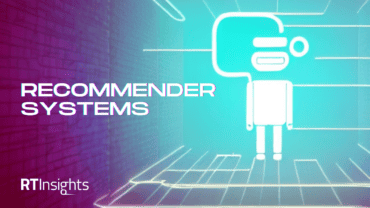
Domain-specific solutions, a lowered barrier to AI adoption, and an emphasis on industrial data value are all benefits industrial AI brings to the table.
The years-long trend toward Industry 4.0, coupled with the pressures of 2020’s economic climate, have made one thing clear: the need to adopt artificial intelligence (AI) isn’t just accelerating; it’s become critical. And while many industrial organizations still lack expertise in and experience with industrial AI, the ability to adopt and implement it will very quickly become a matter of survival.
So much so that 2021 is poised to be a defining year, literally, for a new breed of AI: Industrial AI. While both startups and legacy industrial companies alike have made their own plays around industrial AI, the new year will mark the first time that industrial AI as a new industry category begins to take on a mainstream role.
Here are a few factors that will end up driving more widespread recognition of the Industrial AI category and adoption of the technology in 2021:
1. A growing focus on domain-specific industrial challenges
Capital-intensive industries have made increasingly larger investments into AI and machine learning (ML) platforms, frameworks, and toolkits over the years enabling new AI-based use cases and applications in the process. But these investments have not yet translated to significant business value outcomes, particularly for industrial organizations. So why should 2021 be any different?
The major shift in the new year will be a pivot among industrial organizations to focus on how AI can be applied to tackle domain-specific industrial challenges. This more concretely ties AI-enabled use cases to tangible business outcomes – working backwards from identifying business problems, objectives, and goals, rather than starting with the technology itself. It also more clearly makes the case for widespread industrial AI adoption.
2. Lowering the barrier to AI adoption
A lack of AI expertise and in-house data science skills among industrial organizations has long been one of the biggest bottlenecks on wider Industrial AI enablement. That will change in 2021, as more of these organizations deploy targeted, embedded Industrial AI applications combining data science and AI with purpose-built software and domain expertise. Fit-for-purpose, embedded AI applications will empower users to efficiently and successfully tackle domain-specific functions with greater accuracy, reliability, quality, and sustainability across the industrial asset lifecycle – circumventing the need for niche data science expertise.
3. The push/pull of data value vs. data volume
As organizations have increasingly realized the value of data as a key driving force – behind innovation (and AI), strategic decision making, and overall business success – they have become laser-focused on amassing as much of it as they can. But this trend has led to a rapid accumulation of data for data’s sake and is spurring a new realization: that data, without the ability to be leveraged into actionable insights, isn’t worth much of anything at all. Consequently, the average enterprise doesn’t even use between 60% and 73% of the data it has collected.
This back-and-forth between data volume and data value will be one of the driving forces for industrial AI adoption in 2021. Organizations, especially those in capital-intensive industries, will need to shift gears from mass data collection to more strategic industrial data management, with specific focuses on data integration, mobility, and accessibility across the business. That opens the door for AI and the underlying opportunity for AI-enabled technologies that will allow these organizations to reap the hidden value in their industrial data sets.
4. Undeniable productivity increases across capital-intensive process industries
Ultimately, what will be the biggest factor driving the growth of Industrial AI – as both an industry category and a practical, tangible solution for industrial organizations to use – is the impact it’ll have on productivity. Industrial AI enables next-generation asset optimization solutions to be implemented without needing to rely on large-scale data science expertise. This empowers industrial organizations to open the door to new levels of safety and productivity in their workplace, creating semi-autonomous and autonomous processes for collecting, aggregating, and conditioning live data, then feeding it into intelligence-rich applications. The end results are new insights, continuous operational improvements, and faster and more accurate decision making. In short: the benefits of AI-driven solutions are so clear cut that they speak for themselves.
Last word on industrial AI
All the above trends will help industrial organizations to not just realize the value of AI but begin to operationalize industrial AI in 2021, bypassing the traditionally needed AI technical skills to simplify data management and accelerate time-to-ROI.





























